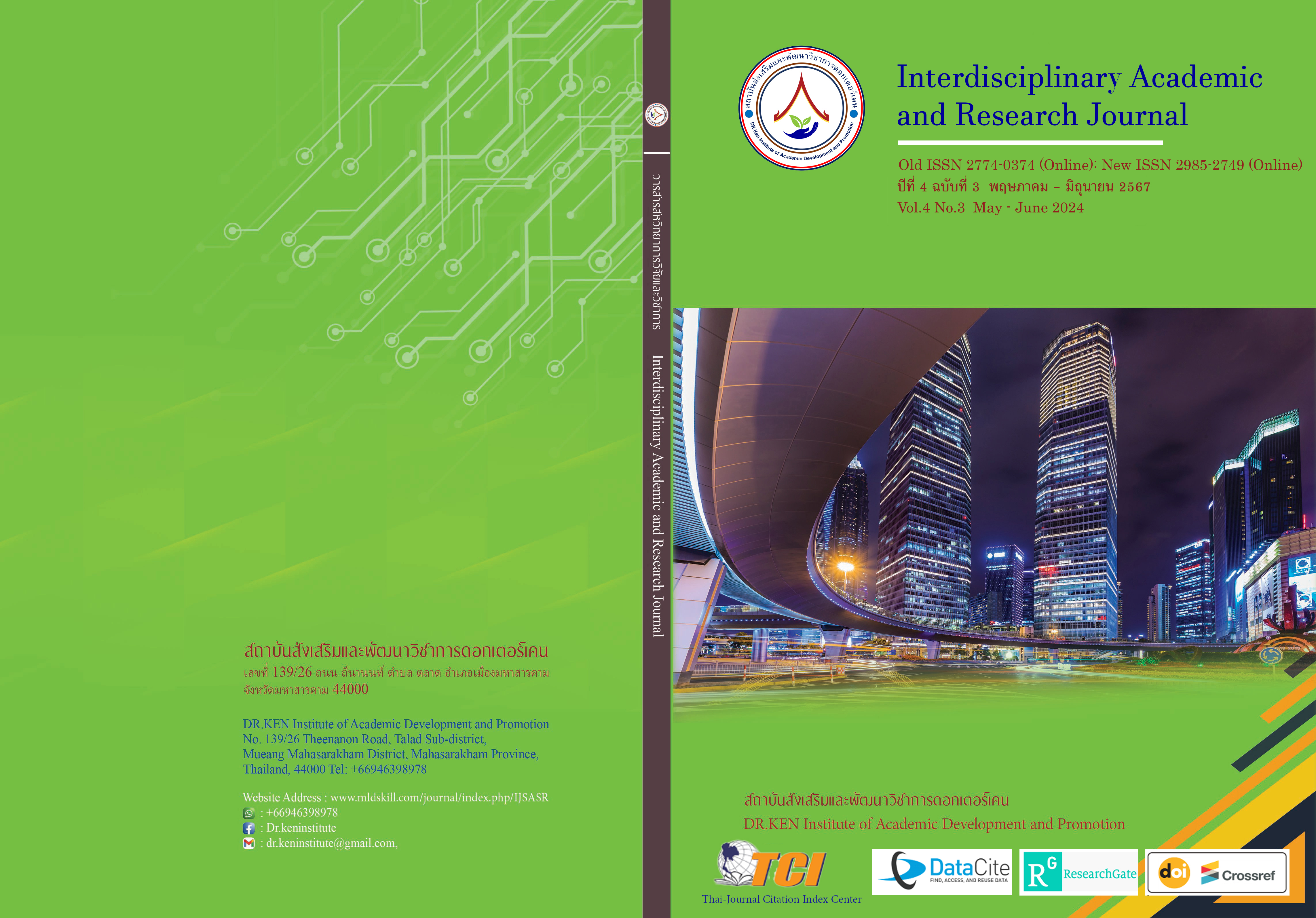Blended Learning: Theory, Practice, and Effectiveness
DOI:
https://doi.org/10.60027/iarj.2024.277283Keywords:
Blended Learning;, A Comprehensive Review of Theory;, PracticeAbstract
Background and Aims: Blended learning can help students achieve better results. This allows teachers to respond to the changing needs of learners in the 21st century and to improve teaching and learning outcomes. A synthesis of knowledge regarding the theory, practice, and effectiveness of blended learning will help make educational management successful.
Methodology: This research is document research. It was carried out by systematic collection and analysis of well-known articles, books, conference documents, and other academic publications to find facts about theory, practice, and effectiveness thoroughly and comprehensively. The results of the study will help promote understanding of blended learning from diverse perspectives and reliable sources.
Results: The results of research on theory, practice, and effectiveness consist of several dimensions as follows: (1) Blended learning theory involves 1.1) overview of blended learning theory, 1.2) constructivist and sociocultural perspectives, and 1.3) application of blended learning theory to effective learning design. (2) Guidelines for blended learning include 2.1) blended learning models, 2.2) application of blended learning in educational contexts, and 2.3) effective integration of face-to-face and online blended learning. (3) Effectiveness of blended learning consists of 3.1) research on the effectiveness of blended learning, 3.2) impacts on student participation, academic achievement, and student satisfaction, 3.3) a comparison with traditional face-to-face and fully online teaching, and 3.4) factors influencing the effectiveness of blended learning. However, the implementation of blended learning has many obstacles, ranging from operation, acceptance, lack of knowledge and skills in managing blended learning, readiness of technology and infrastructure, etc.
Conclusions: Knowledge and understanding of the theory, practice, and effectiveness of blended learning are important in modern education management, consistent with the educational context in the digital age, and helping students be successful and satisfied in learning. Although there may be some problems, they can be overcome with proactive action.
References
Bates, A. W., & Sangra, A. (2011). Managing technology in higher education: Strategies for transforming teaching and learning. John Wiley & Sons.
Bonk, C. J., & Graham, C. R. (2006). The handbook of blended learning: Global perspectives, local designs. John Wiley & Sons.
Driscoll, M. (2002). Blended learning: Let's get beyond the hype. E-learning, 1(4), 1-4.
Garrison, D. R., & Anderson, T. (2003). E-learning in the 21st century: A framework for research and practice. Routledge.
Garrison, D. R., & Vaughan, N. D. (2008). Blended learning in higher education: Framework, principles, and guidelines. John Wiley & Sons.
Garrison, D. R., & Vaughan, N. D. (2018). Blended learning in higher education: Framework, principles, and guidelines. John Wiley & Sons.
Garrison, D. R., Anderson, T., & Archer, W. (2000). Critical inquiry in a text-based environment: Computer conferencing in higher education. The Internet and Higher Education, 2(2-3), 87-105.
Gikandi, J. W., Morrow, D., & Davis, N. E. (2011). Online formative assessment in higher education: A review of the literature. Computers & Education, 57(4), 2333-2351.
Graham, C. R. (2006). Blended learning systems: Definition, current trends, and future directions. Handbook of blended learning: Global perspectives, local designs, 3-21.
Horn, M. B., & Staker, H. (2015). Blended: Using disruptive innovation to improve schools. John Wiley & Sons.
Means, B., Toyama, Y., Murphy, R., Bakia, M., & Jones, K. (2013). Evaluating evidence-based practices in online learning: A meta-analysis and review of online learning studies. US Department of Education.
Oliver, M., & Trigwell, K. (2005). Can ‘blended learning be redeemed? E-Learning, 2(1), 17-26.
Piaget, J. (1970). Science of education and the psychology of the child. Orion Press.
Picciano, A. G. (2016). Blended learning: Research perspectives (Vol. 2). Routledge.
Puentedura, R. (2006). Transformation, technology, and education. Retrieved from http://www.hippasus.com/rrpweblog/archives/000025.html
Tucker, C. (2012). Blended learning in grades 4–12: Leveraging the power of technology to create student-centered classrooms. International Society for Technology in Education.
Vaughan, N. D., Cleveland-Innes, M., & Garrison, D. R. (2013). Teaching in blended learning environments: Creating and sustaining communities of inquiry. Athabasca University Press.
Vygotsky, L. S. (1978). Mind in society: The development of higher psychological processes. Harvard University Press.
Watson, J., Gemin, B., & Ryan, J. (2008). Keeping pace with K–12 online learning: A review of state-level policy and practice. North American Council for Online Learning.
Downloads
Published
How to Cite
Issue
Section
License
Copyright (c) 2024 Interdisciplinary Academic and Research Journal

This work is licensed under a Creative Commons Attribution-NonCommercial-NoDerivatives 4.0 International License.
Copyright on any article in the Interdisciplinary Academic and Research Journal is retained by the author(s) under the under the Creative Commons Attribution-NonCommercial-NoDerivatives 4.0 International License. Permission to use text, content, images, etc. of publication. Any user to read, download, copy, distribute, print, search, or link to the full texts of articles, crawl them for indexing, pass them as data to software, or use them for any other lawful purpose. But do not use it for commercial use or with the intent to benefit any business.
















.png)


